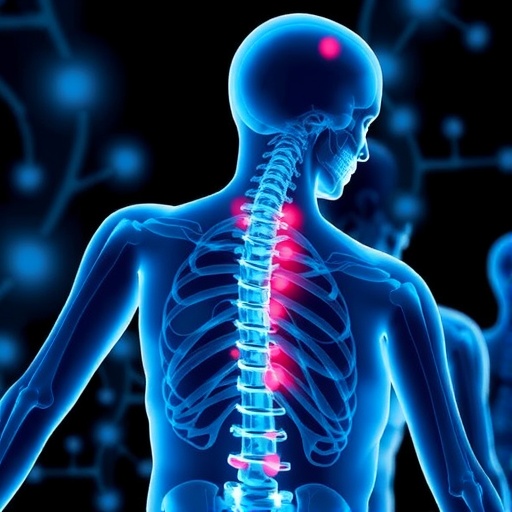In recent years, the field of genomic research has experienced a groundbreaking evolution, fundamentally reshaping how scientists explore the intricate interplay between genetics and cellular behaviors. This transformation is primarily fueled by advancements in high-quality genome databases, a deeper understanding of epigenetic factors, and the revolutionary CRISPR–Cas genome editing technology. As a consequence, researchers are now presented with unprecedented opportunities to dissect biological mechanisms at an unprecedented scale. However, the seamless integration of genetic and epigenetic effects into spatially resolved cellular phenotypes continues to pose significant challenges, prompting the need for innovative solutions.
At this pivotal moment in biological research, Image-Activated Cell Sorting (IACS) emerges as a cutting-edge technological marvel, addressing the critical gap between genomic alterations and observable cellular phenotypes. The essence of IACS lies in its ability to perform real-time image-based sorting of various suspended objects, including single live cells, cell clusters, and even cells adhered to carriers. This method operates at remarkably high rates, surpassing 1,000 events per second, thus enabling researchers to sort millions of cells rapidly and efficiently.
Unlike traditional fluorescence-activated cell sorting (FACS), which relies on one-dimensional fluorescence intensity profiles that may overlook complex cellular characteristics, IACS radically shifts the paradigm by harnessing multi-dimensional optical imaging. This methodology captures not only the essential features of individual cells but also the intricate tapestry of their visual and functional attributes. Consequently, IACS presents a high-content sorting approach that caters to the multi-faceted nature of biological research, empowering scientists to make informed decisions grounded in a comprehensive understanding of cell behavior.
A distinguishing feature of IACS is its seamless integration with artificial intelligence, paving the way for real-time image analysis. The incorporation of AI technologies allows for sophisticated decision-making processes during the sorting phase, ensuring that researchers can efficiently isolate and analyze specific cell populations based on nuanced criteria. This intersection of imaging and artificial intelligence represents a remarkable fusion of technology and biology that fundamentally enhances our ability to understand cellular dynamics.
The remarkable capabilities of IACS enable it to find applications across various fields, reflecting the technology’s versatility and broad appeal. In microbiology, IACS facilitates the in-depth analysis of microbial communities, allowing researchers to isolate and study specific strains of bacteria, fungi, and other microorganisms. In immunology, the ability to sort immune cells in real-time enhances our understanding of immune responses and holds promise for breakthroughs in vaccine development and cancer immunotherapy.
In the realm of cancer biology, IACS has the potential to revolutionize how we approach cancer treatment by enabling precise sorting of tumor cells based on their unique characteristics. By isolating specific subpopulations of cancer cells, researchers can gain insights into tumor heterogeneity, treatment resistance, and the mechanisms underlying metastasis. This knowledge may ultimately lead to more effective strategies for targeting malignant cells while sparing healthy tissues.
Moreover, the applications of IACS extend into food science, where it can be employed to analyze and sort food samples based on their cellular composition. This capability is essential for ensuring food safety, quality control, and the development of novel food products. In sustainability science, IACS aids environmental researchers in studying microorganisms involved in bioremediation, enabling improved strategies for restoring contaminated ecosystems.
While the potential of IACS is vast, it is essential to acknowledge the challenges that accompany its implementation. From technical hurdles related to imaging resolution and sorting speed to the need for robust AI algorithms capable of processing complex image data, researchers must navigate a landscape of ongoing development. Additionally, ensuring the reproducibility and standardization of IACS protocols remains a pivotal task to facilitate its widespread adoption in laboratories around the world.
Despite these challenges, the future of IACS appears promising, as ongoing advancements in imaging technologies and data analysis techniques continue to drive its integration into diverse research contexts. By addressing the current limitations and refining the technology, researchers can unlock entirely new avenues of discovery across biology and medicine.
As IACS gains traction in both academic and industrial settings, it is poised to become an indispensable tool for researchers seeking to bridge the gap between genetic and epigenetic insights and observable cellular behaviors. With its potential to unlock a deeper understanding of cellular dynamics, IACS stands as a cornerstone for the next wave of breakthroughs in biological research, ultimately leading to transformative discoveries that could reshape our approach to health, disease, and the environment.
In summary, Image-Activated Cell Sorting represents a significant advancement in the field of genomic research, offering powerful capabilities to link genetic and epigenetic alterations to real-time cellular phenotypes. As this technology continues to evolve, it holds the promise of accelerating discoveries in microbiology, immunology, cancer biology, food science, and sustainability science, driving innovation across multiple disciplines and shaping the future of biological research.
Subject of Research: Image-Activated Cell Sorting (IACS)
Article Title: Image-activated cell sorting.
Article References:
Ding, T., Lee, K.C.M., Tsia, K.K. et al. Image-activated cell sorting.
Nat Rev Bioeng (2025). https://doi.org/10.1038/s44222-025-00334-1
Image Credits: AI Generated
DOI: 10.1038/s44222-025-00334-1
Keywords: Image-Activated Cell Sorting, IACS, CRISPR, epigenetics, genomics, artificial intelligence, microbiology, immunology, cancer biology, food science, sustainability science.
Tags: biological research innovationscell sorting technologycellular phenotypes analysisCRISPR-Cas genome editingepigenetic factor integrationgenetic and epigenetic interplaygenomic research breakthroughshigh-throughput cell sortingIACS advancementsImage-Activated Cell Sortingmulti-dimensional optical imagingreal-time cell sorting





